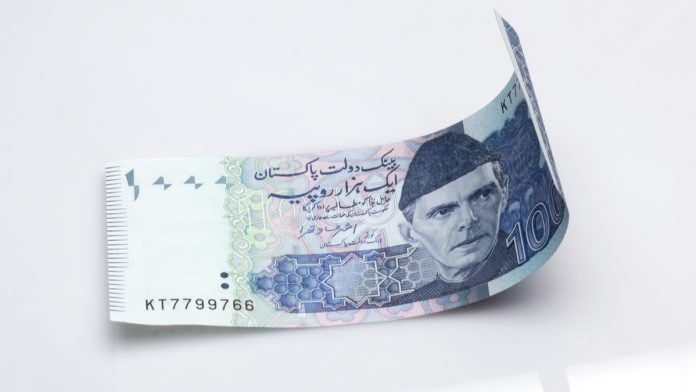The Pakistani Rupee continues to nosedive versus the US Dollar on Wednesday. The US Dollar-Pakistani Rupee exchange rate has advanced to 168.00 after settling on Tuesday at 167.50. The Rupee is trading just marginally above its record low of 168.45 struck at the end of March.
Government Debt Jumps 21.3%, Likely To Increase
The Pakistani Rupee is trending lower across the week after the International Monetary Fund (IMF) said that it will postpone the second review of its US$6 billion bailout package. The review was scheduled to take place on Friday and has been postponed owing to a delay in implementing the agreed actions by Pakistan. The priority has changed, and the focus has shifted onto a rapid financing facility of $1.4 billion.
Separately a report by the State Bank of Pakistan revealed that public debt grew by an additional Rs 6 trillion in just one year. Central government debt jumped 21.3% to Rs 33.4 trillion by the end of February.
Debt levels are expected to worsen due to the coronavirus impact. The virus outbreak is expected to cause a sharp reduction in both tax and non-tax revenues.
Risk aversion in the broader financial markets continues to weigh on riskier assets and currencies, such as the Pakistan Rupee, as investors favour safer havens like the US Dollar.
Safe Haven Dollar Rises As Death Toll Rises
The US Dollar was advancing across the board on Wednesday as worries over the spread of coronavirus returned. Hot spots on both sides of the Atlantic reported a sharp rise in the number of daily fatalities.
New York reported 731 deaths on Tuesday, its sharpest rise on record. The UK recorded 786 coronavirus deaths, whilst Spain and Germany also surprised with steep increases. The coronavirus statistics have raised fears that places, which were supposedly peaking or past the peak are in fact still ascending the curve.
Investors will now look ahead to the release of the minutes from the Federal Reserve monetary policy meeting from March. Investors will be looking for further details on guidance on policy and the economic outlook. So far the Fed has pledged a huge amount of stimulus, which leaves the question what ammunition do they have left?





